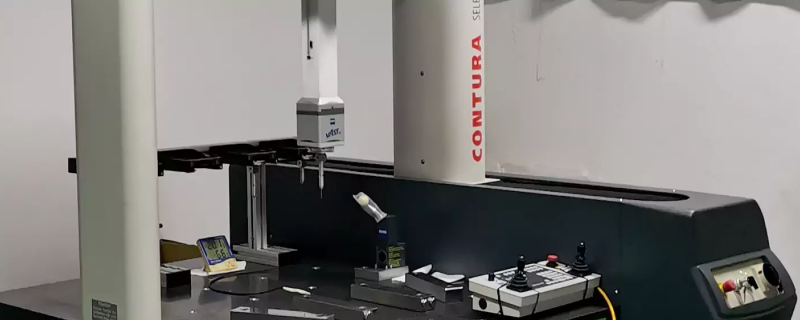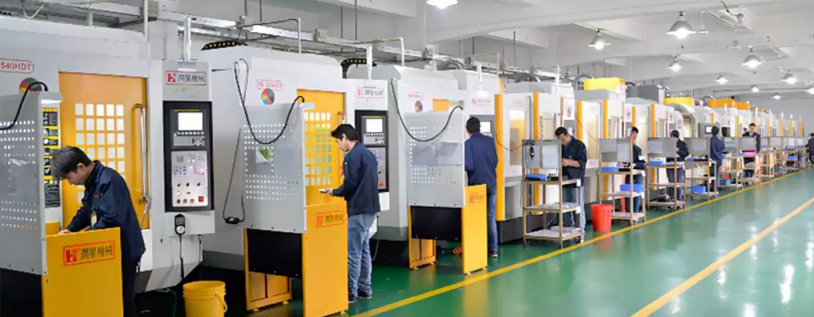Blog
We regularly update articles related to the prototyping and manufacturing industry. You’re welcome to check our previous blogs and subscribe to our newsletter.
what is metal processing? A Comprehensive benefit and its Applications
What exactly is metal processing, and what are some crucial elements?
What is metal processing? Metal shaping, manipulation, and transformation into useful products or components is called metal processing, often known as metalworking or metal fabrication. This process involves several steps, including shaping, cutting, connecting, and finishing, all intended to give the metal material the proper shape, size, strength, and usefulness. Many sectors, including manufacturing, construction, automotive, aerospace, electronics, and more, rely heavily on metal processing. The following are some crucial elements of metal processing:
- Forming:
Forming entails modifying a metal’s form without removing any of the metal. Common forming procedures include bending, rolling, drawing, forging, and extrusion. Simple curves to intricate patterns may be produced using these procedures.
- Cutting:
Cutting is removing material from a metal object to shape or enlarge it. Machining involves using machines such as lathes, mills, and drills, and laser, plasma, waterjet, and electrical discharge machining (EDM) are common cutting techniques.
- Joining:
To link two or more metal parts together, joining procedures are utilized. One of the most popular techniques is welding, in which metals are melted at their intersection and solidified to form a permanent link. Soldering, brazing, and adhesive bonding are further connecting methods.

Machining:
Using cutting tools, machining entails removing material from a metal workpiece. Processes like turning, milling, drilling, and grinding might fall under this category. Precision forms and smooth surfaces are frequently produced by machining.
Finishing:
It enhances a metal’s appearance, surface quality, and functional characteristics after frequently using major processing steps and finishing procedures. This may entail heat treatment, plating, coating, and polishing.
Sheet Metal Processing:
Working with thin sheets of metal, which are frequently utilized in the automotive and electronics sectors, is the emphasis of sheet metal processing. Techniques like cutting, bending, punching, and deep drawing are used to create components like panels and enclosures.
Casting:
When molten metal is poured into a mould to take the shape you want when it cools and hardens. This is frequently utilized to make complicated and sophisticated forms that may be challenging to accomplish using other techniques.
Forging:
Forging is shaping metal by applying pressure and concentrated compressive forces. It is frequently applied to produce robust components with enhanced mechanical characteristics.
Extrusion:
Extrusion is pushing a metal substance through a die with a specific form to produce long, continuous objects with predictable cross-sections. Producing things like aluminum profiles for windows and doors is a popular use.
What advantages come with dealing with metal processing?
Numerous advantages of metal processing help explain why it is important in so many different sectors. The following are a few of the main advantages of metal processing:
Versatility:
A wide range of metals, including steel, aluminum, copper, brass, titanium, and more, may be processed using several processes. This adaptability enables the creation of a variety of goods and parts.
Customization:
Metal processing makes the exact customization of forms, sizes, and patterns possible. This is crucial for addressing specialized functional and aesthetic criteria in sectors including aerospace, automotive, electronics, and architecture.
Strength and Durability:
Various metal processing techniques may improve metal materials’ strength and toughness. Metals’ mechanical characteristics, for instance, may be enhanced by heat treatment and forging, making them more resilient to wear, impact, and other pressures.
Complex forms:
Using metal processing, elaborate and complex forms may be produced that may not be possible with other materials or techniques. This is essential for sectors like aerospace and medical devices that depend on accurate engineering and design.
Resistance to high temperatures:
Metals, such as engines and industrial furnaces, are frequently employed in high-temperature applications. Heat-resistant alloys and components made to endure intense temperature conditions can be produced by metal processing.

Conductivity:
Electrical and thermal conductivity is excellent in many metals, including copper and aluminum. These metals may be processed into parts for heat sinks, electrical circuits, and other things.
Recyclability:
Metals have a high degree of recyclable content. Metal production techniques frequently produce scrap or trash. However, these may be gathered and repurposed into new goods, minimizing environmental impact and sparing resources.
Mass Production:
What is metal processing? is covered in this article. Metal processing methods like stamping and extrusion make it possible to produce standardized parts in large quantities quickly and effectively. This is essential for sectors that require several identical or comparable parts in large quantities.
Corrosion Resistance:
While certain metals are naturally corrosion-resistant, others can be treated or coated to increase their resistance to rust and other types of corrosion, extending the lifespan of the finished goods.
Joining Capabilities:
Various joining processes, such as welding and brazing, are used in metal processing technologies to link metal components together securely, long-lastingly.
Applications of metal processing:
The shaping, modifying, and refining of metals to produce usable products is a large area covered by various processes. It has many uses and is essential to many different sectors. Here are a few typical uses for metal processing:
- Fabricating vehicle components, such as engine parts, body panels, chassis, and suspension systems, makes substantial use of metal processing.
- Metal processing allows the creation of lightweight yet durable components for aircraft and spacecraft. Metals are utilized in the building of aircraft.
- The production of structural steel, reinforcing bars, beams, and other elements used in structures and infrastructure is one way that metal processing supports the construction sector.
- Many electronic equipment’s circuit boards, connections, and casing are made of metal. For the creation of these pieces, metal processing is essential.
Conclusion:
Turning raw metal resources into usable products is known as metal processing in the industrial process. This thorough research seeks to give readers a thorough grasp of the various metal processing methods and applications. In this article, what is metal processing? It can be explained above. Metal is melted and poured into a mould during casting to generate a desired shape. We have established a rigorous quality control system, and the items’ quality has withstood the test of time. LOUIS MACHINE quality and technology will satisfy all of your demands. Our corporate philosophy’s core concept of integrity was something we upheld.





